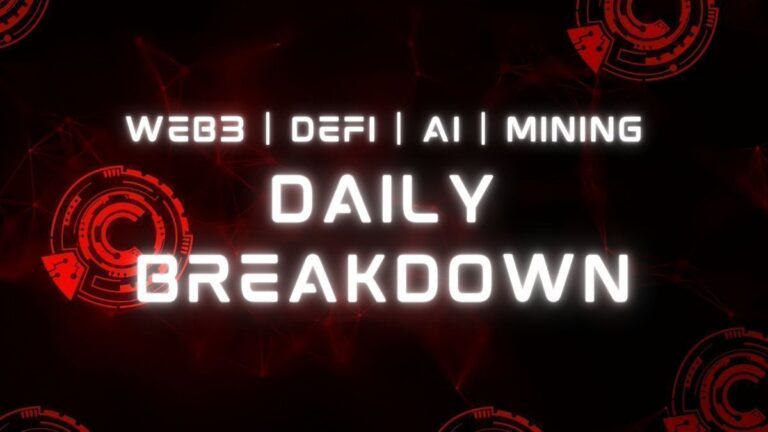
TL;DR: The crypto landscape is experiencing a shift towards more efficient and secure mining methods, with new projects like Bitcoin Spark (BTCS) at the forefront. With its unique Proof-of-Process mechanism, BTCS aims to equalize mining power by letting users rent computational power for tasks like coding or serving. This is coupled with an emphasis on security and scalable application software. Meanwhile, the AI boom is redefining crypto mining as GPUs find new uses in training AI models. The article explores these transformative trends and offers insights into the profitability of crypto mining.
Crypto Mining 2.0: Exploring the Game-Changers like Bitcoin Spark
The world of cryptocurrencies has evolved significantly since the launch of Bitcoin in 2009. No longer a niche playground for technophiles, the crypto industry has matured into a vast ecosystem of financial instruments, platforms, and technologies. Central to this is the concept of crypto mining, a complex process that is now undergoing revolutionary changes.
The Evolutionary Process of Crypto Mining
Crypto mining plays a critical role in the operations of a blockchain. Think of it as the backbone, enabling transaction validation and network security. Miners contribute computational power to solve mathematical problems, create new blocks, and are rewarded with newly minted coins for their efforts. It’s a decentralized alternative to the centralized banking systems, offering both efficiency and security.
Bitcoin Spark: A New Age in Mining
Enter Bitcoin Spark (BTCS), a project aiming to shift the paradigm of mining. BTCS introduces a unique mechanism, Proof-of-Process (PoP), that allows users to rent computational power from mining devices for various tasks. Instead of concentrating mining power among those with extensive resources, the system democratizes access. In the BTCS network, users stake their coins as a form of collateral and share their computing resources. The system is nuanced; more staking doesn’t necessarily equate to more earnings. The rewards are tied to the value of the computational work provided, thus making the system more balanced and equitable.
In terms of application, BTCS is designed to run efficiently, avoiding pitfalls like battery drain or overheating. Security is not compromised as all processing occurs in isolated environments, making it resistant to potential attacks.
Profitability Quandary in Crypto Mining
Understanding the profitability of mining is vital for anyone venturing into this space. While early miners of cryptocurrencies like Bitcoin were blessed with lower competition and costs, today’s landscape is far more challenging. The increase in mining difficulty has been accompanied by a rise in energy costs, making the returns on investment less predictable. Individual miners often find themselves at a crossroads, considering whether joining mining pools or even setting up mining farms is a viable strategy.
AI’s Symbiotic Relationship with Crypto Mining
AI technologies are offering a lifeline to the crypto mining world. Machines previously deployed for mining are finding second lives in training AI models. GPUs, essential for crypto mining, are now contributing to AI computations. Companies like Satoshi Spain are leading the charge, pivoting their mining rigs to cater to AI applications.
AI not only benefits from the crypto industry but also adds value to it. The technology has the potential to make blockchain systems more efficient, secure, and user-friendly, thereby fostering broader adoption.
The Interplay between Regulation and Technology
The rapidly evolving landscape of AI and crypto technologies is attracting the gaze of regulators worldwide. Collaborative efforts between the tech industry and regulators are crucial for shaping the future of these transformative technologies. Regulatory frameworks could play a pivotal role in steering AI and crypto towards a path of sustainable and ethical growth.
In Closing
As we traverse the fascinating landscape of decentralized technologies, it becomes apparent that the marriage between blockchain and AI represents not just a technological convergence but a philosophical one. It’s a melding of two domains that have the potential to redistribute power from centralized entities to the individual. Yet, this brave new world demands vigilance, an understanding that freedom and opportunity come with the responsibilities of ethical conduct and informed participation. And so, as pioneers in this digital frontier, let the focus be not just on amassing wealth or power, but on cultivating a culture of empowerment, integrity, and collective progress.
Thank you for reading “Crypto Mining 2.0: Exploring the Game-Changers like Bitcoin Spark“.
- Subscribe to our newsletter: ConsensusProtocol.org
- Follow us on Twitter: @ConsensusPro
Sources
- Wall Street Journal report on AI and Crypto Mining, dated July 2
- Bitcoin Spark official documentation and ICO details
- Studies and articles on crypto mining profitability
- Reports from Coinbase on the intersection of AI and crypto
- PYMNTS articles on potential AI regulations




